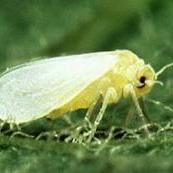New native predatory mite for grape, almond and pomefruit crops
Monday, May 6, 2019
Advancements in rearing techniques and new facilities will make Biological Services the first in Australia to offer vineyard and almond growers a new ally in the control of crop-damaging mites in the form of native predatory mite, Typhlodromus doreenae (Doreen).
Helping to protect Australia’s vineyards and almond orchards against crop-damaging mites could be boosted by our imminent production of the native predatory mite, Doreen. Doreen (Typhlodromus doreenae) is an Australian native predatory mite which has been shown to feed on Rust mite, Bud mite, Blister mite and Bunch mites in winegrapes, Bryobia mites in almonds and pomefruit, and other eriophyid mites in a range of crops.
Field research between 1988 and 1994 showed this predator to be quite common in these crops throughout south-eastern Australia. The Biological Services team says modern advancements in predator-rearing now make it possible for us to be the first in Australia to offer Doreen to commercial growers to promote healthier crops.
“Australia has more than 135,000 hectares of vineyards and 40,000 hectares of almond orchards which together have a primary production value of more than $2 billion annually1. We’re passionate about helping growers rely less on chemicals so we’re excited about the contribution Doreen could make to an Integrated Pest Management approach,” said James Altmann, Director of Biological Services.
“We first came across Doreen more than 30 years ago during two separate projects looking at mite control in winegrapes and in almonds. The native mite was present in both crops and was found feeding on a wide range of mites including Rust mite and Bud mite in winegrapes, and Bryobia mite in almonds.
“At the time, Dr David James from NSW Agriculture published research papers showing the value of this predator, including in his video titled ‘Wine, Women & Vineyard mite control”. While there was a budget to investigate the mass-rearing of these predators, unfortunately no cost-effective techniques were able to be found at that time,” James said.


Photo 1. Typhlodromus doreenae feeding on grapevine Rust mites. Photo 2. Grapevine Rust mite damage.
Similar to Biological Services’ experience with Typhlodromalus lailae which we are now rearing 20 years after first discovering its potential to control whiteflies, thrips and mites, the passage of time can be a key factor in moving from discovery to commercialisation.
“More recently, I discovered colonies of Doreen feeding on Bryobia mites in apples. This triggered renewed interest from 30 years ago and samples have now been collected from the field from both apples and winegrapes,” James said.
“New rearing techniques and some new facilities have now given us the ability to rear this predator in good numbers. It helps to have a long memory and rearing Doreen is something I have always wanted to do.
“Now we can test their ability to establish and control pests with inoculative and inundative releases,” he said.

Almond leaves showing Bryobia mite damage (left) compared to healthy leaf (right).
Also keen to see a trial of Doreen is Riverland Winegrape Growers Association Executive Chair, Chris Byrne. He notes that although the region has the perfect climate for wine grape production, Riverland growers do have challenges with several mites.
“If you don’t get on top of your Rust mites for example, they get more serious the next year and can cause restricted growth in spring. Most serious growers understand the importance of finding a place for Integrated Pest Management, particularly the increasing number of organic viticulturalists in the region,” Chris said.
“I’d really love to see a trial of Doreen get up in the Riverland and know many growers will express an interest in being part of any trial that goes ahead. If we can maximise the presence of friendly predators in local wine grapes we will be able to minimise the use of pesticides which will be a real plus for our region in the longer term,” he said.
To learn more about Doreen or how integrated pest management can help reduce the risk of chemical resistance among crop pests, contact Biological Services on 08 8584 6977 or by email.
1.Annual production value calculated with figures taken from two reports. Australian Wine Sector at a Glance." Australian Wine Sector at a Glance | Wine Australia. Accessed April 23, 2019. https://www.wineaustralia.com/market-insights/australian-wine-sector-at-a-glance and Report. Wine Australia. 1. 2017. Accessed April 23, 2019. https://www.wfa.org.au/assets/vintage-reports/NationalVintageReport-2017.pdf.





